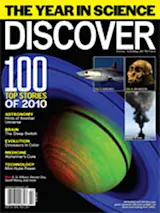A fragment of a pinkie finger excavated from a deep cavern in southern Siberia may point to a new species of ancient human. The 40,000-year-old bone yielded DNA markedly different from that of modern humans or Neanderthals, challenging the current view of how our ancestors migrated out of Africa.
Johannes Krause and Svante Pääbo of the Max Planck Institute for Evolutionary Anthropology in Leipzig, Germany, zeroed in on mitochondrial DNA (which is passed down intact from a woman to her children) preserved in the ancient bone. In January they identified it as belonging to an unknown female hominid whom they nicknamed “X Woman.” Her mitochondrial DNA differed from present-day human DNA at nearly 400 positions, twice the difference measured between human and Neanderthal DNA. The genetic patterns indicate that X Woman, Neanderthals, and modern humans shared a common genetic ancestor about a million years ago.
Pääbo suggests that X Woman may belong to a group of archaic humans who migrated out of Africa at a different time from Neanderthals or modern humans. If so, her group survived an astoundingly long time alongside the others—perhaps for hundreds of thousands of years. It is also possible that she was descended from the hybrid spawn of an ancient tryst between her ancestors and Neanderthals.
Krause and Pääbo are now sequencing the nuclear genome from the Siberian finger fragment. If the nuclear DNA confirms their initial findings, it will mark the first time that an entirely new group of ancestral humans was identified by sequencing DNA from a mere bone fragment, exponentially widening the potential to understand our human ancestors. “More and more, we will see a lot of genetic information coming from fossil remains in which very little morphological information exists,” Pääbo says.














